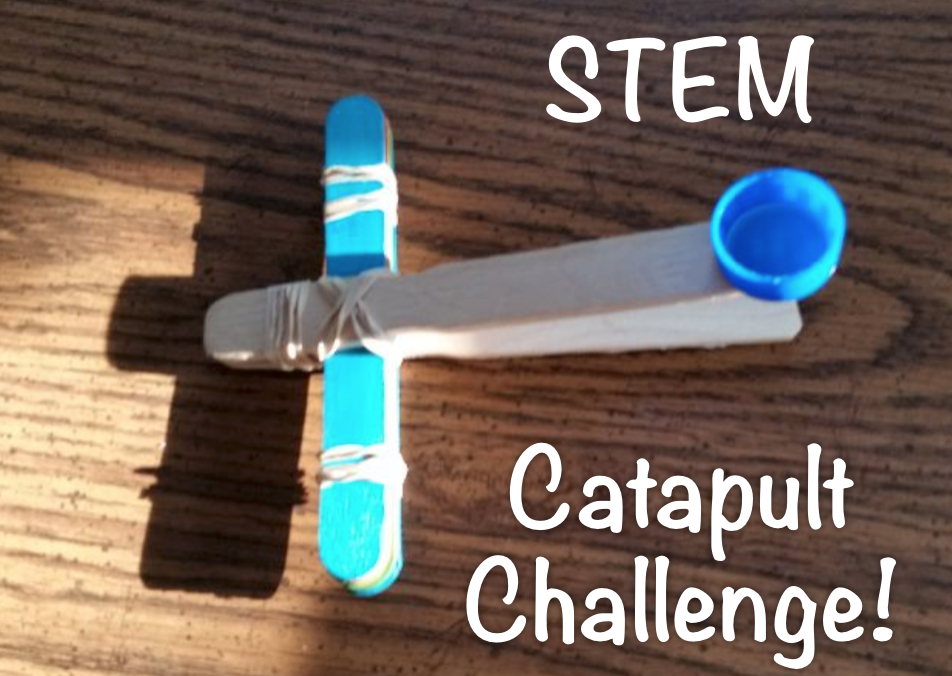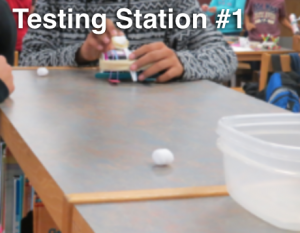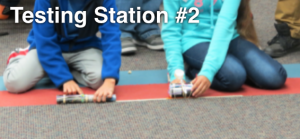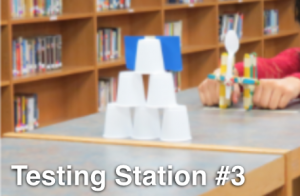Catapult Challenge
Supplies, instructions, resources, and worksheets are below!

Catapult Challenge
Project Description
In this fun, STEM activity, you’ll design and build two different catapults to test for power and accuracy. First, you’ll research and learn all about how catapults work and their design. Then, you’ll set up Testing Stations to record your findings.
Activity Time
1-2 days
Supplies Recommended
Magazines & newspapers
Popsicle sticks
Q-tips
Rubberbands
Scissors
Plastic bottles
Soda can
Soup cans
Plastic spoons
Bottle caps
Cotton balls or tinfoil balls (for launching)
Marshmallows (for launching)
Dried pinto beans (for launching)
Plastic bowl for testing station #1
Masking tape for testing station #2
At least 6 plastic cups for testing station #3
Measuring tape or ruler
Investigative Worksheet
Learning Objectives
Understand design and engineering processes
Understand the science behind catapults
Improve critical thinking skills
Understand why testing is important in science and engineering
Basic math concepts
Vocabulary Terms to Understand
Look up each word and write their definition on paper.
launch
lever
torque
trebuchet
firing arm
bucket
pull back angle
potential energy
stored energy
tension
counterweight
pivot point
payload
sling
force
angle
gravity
Instructional Videos Slide Show
Instructions
1. Print the Investigative Worksheet.
2. Research catapults and how to make them on the Internet.
3. Watch the video slide shows above to learn more on how to make your catapults.
4. Using a variety of supplies from the recommended supplies list above, create two separate styles of catapults. You can use any supplies to make your catapults, and the above supplies list are recommendations.
5. Set up three testing stations:
Testing Station #1, you’ll test for Accuracy using cotton balls for launchers and the plastic bowl. Use a long table or the ground to set the bowl where the cotton balls launch into the bowl. From the set distance, launch 5 cotton balls from each catapult. Draw a table on the back of the Investigative Worksheet to record the distance and how many cotton balls land in the bowl from each catapult.

Testing Station #2, find a large area and make a launch line on the ground using Masking Tape. Launch three marshmallows from each catapult at the launch line. Record the distance for each launch for each catapult on the Investigative Worksheet.

Testing Station #3, on the ground or a long table set up at least 6 plastic cups in a tower. Test from each catapult using dried pinto beans as launchers to see if you can knock down the tower from different distances. Record the results on the Investigative Worksheet.

Questions
Does the angle (how far back you pull the launcher) effect distance?
Does the weight of the object being launched effect distance?
How could you design your catapult better for longer distance?
How accurate is each catapult?
Which catapult design worked best?
What is the average distance of all your test trials?
More Resources
Wikipedia: Catapult
Britannica: Catapult Military Weaponry
Catapult Physics
How Does a Catapult Work?
3 Main Types of Catapults
The History of the Catapult
Leonardo da Vinci Catapult Kit (on Amazon)
Catapult: The Long-Reaching History of a Prominent Medieval Siege Engine
Catapults in the Middle Ages
